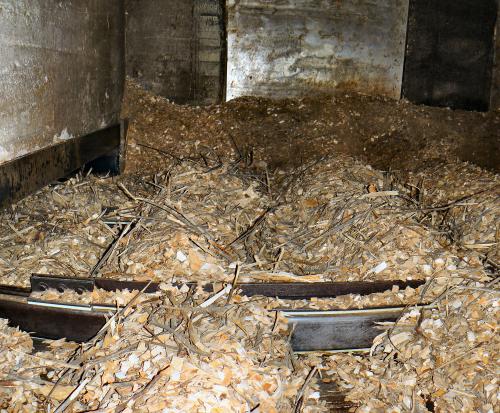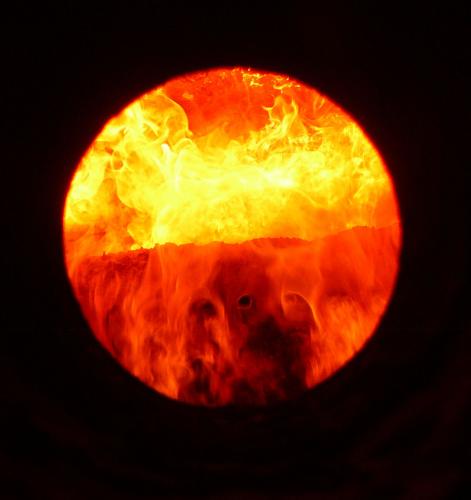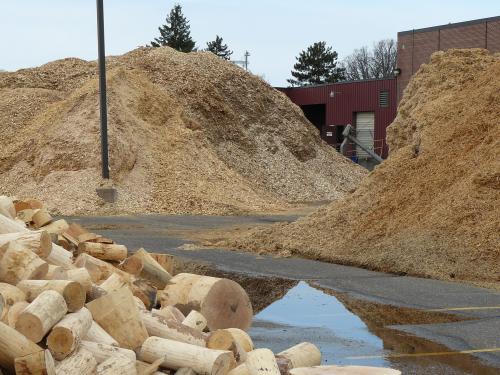Wood energy revisited
Following a cold winter, now might be the time to consider heating with wood. Wood heat technology goes far beyond the common smoke-belching outdoor burners. It is an efficient, dependable, low-cost alternative to fossil fuels.

When should one employ wood heating? First, wood-fueled technologies should be considered when it is time to replace an aging system. Second, if your home, business or community is off the natural gas grid, then price advantages are significant. Third, the size of the space to be heated matters. Fourth, the infrastructure and design of the current heating system will influence conversion costs to a wood. Fifth, there must be a willingness to consider adopting a “new” technology.
When the old system needs to go, a homeowner, business or community must purchase and install a new system. Typically, technologies similar to the existing technologies are the standard options. While initial costs are often lower, long-term costs are often considerably higher than a wood-fueled system.
Because wood-fueled heating systems are less common and less understood, it is easy for engineers, designers and owners to stick with the familiar. This can be a costly mistake. Engaging a design firm familiar with wood systems will provide a more reliable cost comparison. Case studies of successful conversions to wood abound.

Wood chip storage buildings have floor designs engineered to move chips onto conveyor systems.
Almost any home or business off the natural gas grid will see significant cost reductions after converting to wood pellets, wood chips or cordwood heating systems. Schools, more than other institutions, have successfully converted to wood. Even small schools have realized enough savings to retain at least one teacher, or use the savings in some other manner.
District energy systems, which heat multiple buildings, often exceeding 150,000 square feet, have seen savings in the tens of thousands of dollars, even over natural gas. Margins are even larger if previous fuel sources were fuel oil or propane. Payback schedules are often under ten years, some as few as 2-3 years. District energy distribution can be via either hot water or low-pressure steam. Domestic and commercial hot water, and cooling, can also be supplied through wood-using systems.
The most economical wood heating system uses wood chips. However, the boiler, or boilers, needs to be at least in the 3.0 to 3.5 million btu size class. A wood handling system (dumps, bins, conveyors, etc.) must be installed, if one does not already exist. Underground piping needs to be emplaced, if it isn’t already in place.

Wood chip fed boiler.
Individual facilities or groups of buildings that already have elements of wood-fueled systems will have lower installation costs. Old coal-fired facilities often have adaptable bins and loading platforms. An existing hot water or steam distribution system currently powered by fossil fuels will substantially reduce installation costs. These determinations can often be made during a pre-feasibility study.
For smaller spaces, either a wood pellet or cordwood system works well. Homes can be easily heated with a pellet stove or pellet furnace (outdoor or indoor). Hoppers of various sizes determine the frequency of re-stocking the pellet supply. Winter operating costs might run in the $200-$350 per month range for a refitted, larger, older home. Costs would be significantly less for new construction or a small home. The systems can pay for themselves in four to six years. Of course, the costs and paybacks will vary from house to house.

Conventional mix of wood chips. Some systems have stricter chip specifications than other systems.
For outdoor systems using cordwood, newer EPA approved “phase 2” boilers should be installed. These boilers are more efficient and cleaner-burning. They are not yet required in Michigan, but an owner would be wise to install these cleaner-burning units. Additionally, the lifetime costs of the phase 2 units are likely to be lower than the older “dirty dog” units.
Any of these home / small business wood-fueled technologies will typically provide savings over either propane or fuel oil and, possibly, match the price of natural gas. Cordwood systems, if firewood labor is not considered, will easily beat the cost of natural gas. Small businesses may prefer pellet systems due their greater convenience.
With no doubt, there are many sites where the finances and logistics demonstrate wood-fueled systems as the best choice. The major barriers often lie in the acceptance of alternatives. There are several common concerns about these systems that closer examination easily resolves.
Does burning wood produce harmful emissions? The answer is no, especially compared to fossil fuel emissions. Particulates and other emissions are within EPA standards. There is no “wood smoke” smell from modern systems. Medical care facilities are common wood heat adopters.

Three different feedstocks used to fire a district energy system that supplies heat and cooling to several buildings.
Wood fuel systems are at least as reliable as fossil-fueled systems. While all systems require maintenance, wood-fueled systems do require additional maintenance. However, those costs are part of the cost analysis and are more than compensated by cost-savings in other areas.
Won’t these systems be noisy? And, what about the increased truck traffic? Wood-fueled systems create no more noise than other systems. Chip delivery semi-vans are less frequent than what some people guess. For example, a multi-building facility in the Upper Peninsula, about 170,000 square feet with a seven million btu heat demand, will need no more than two truck deliveries per week, even during winter cold snaps. Many schools accept chip trucks with no concern over student safety.
A common concern about wood heat is the effect on our forests. The response involves more of answer than available in this article. Of course, nobody expects every building to be heated with wood. That demand would, indeed, be unsustainable. However, in many areas, wood is an increasingly abundant raw material with the supply infrastructure already in place. Wood is locally-sourced and keeps energy dollars and jobs in the communities which use wood heat.
The utilization of currently low value material as a heating source will actually help better manage forests. Better managed forests are healthier and provide higher quality and more abundant values, from timber to ecological services.
So, when the time comes to replace a conventional heating system, Michigan State University Extension recommends that you consider a system that is fueled by wood. You could be surprised at how much sense such an alternative might be.



 Print
Print Email
Email




